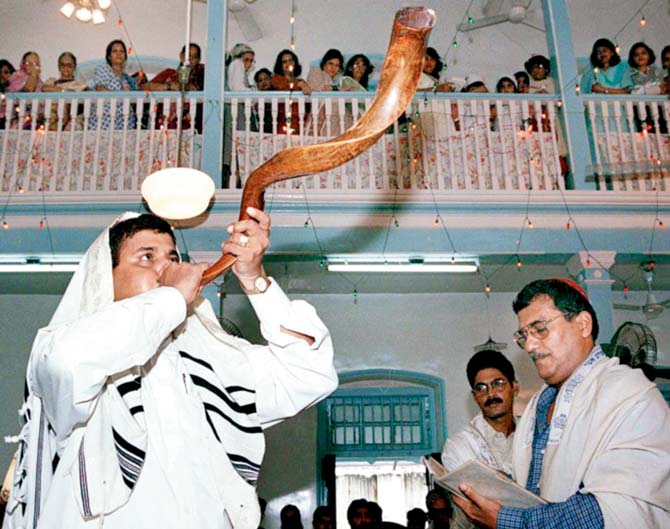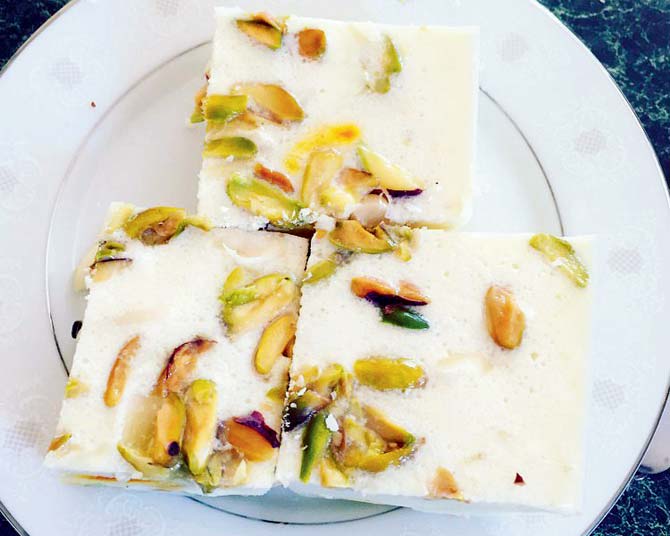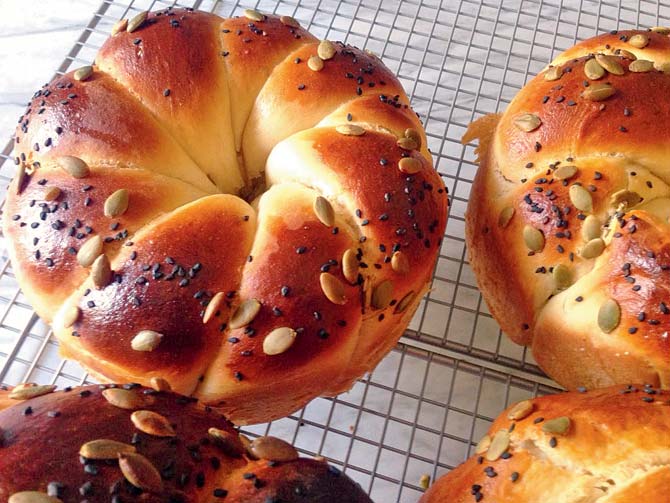As Jews get ready to herald Rosh Hashanah, let's take a peek into the festivities that surround the Jewish New Year, which begins on Sunday

 A priest blows the shofar (horn) to usher in the Jewish New Year at the Magan Hassidim Synagogue. Pics/AFP, Sameer Markande
A priest blows the shofar (horn) to usher in the Jewish New Year at the Magan Hassidim Synagogue. Pics/AFP, Sameer Markande
ADVERTISEMENT
It may be the seventh month of the year, but for the Jewish community, this is the beginning of their year. This Sunday, across the city, people will gather at synagogues to herald Rosh Hashanah (head of the year). Celebrations of the two-day festival include early morning and evening prayers, listening to the shofar (a musical horn made of ram’s horn) and eating symbolic foods.

New Year celebrations include prayers by the seaside
Every Jew makes it a point to hear the shofar on Rosh Hashanah. “The ram’s horn is a symbol of Abraham’s love for god, his willingness to sacrifice his own son,” says Judah Samuel, 50, the director (marketing), Israel Ministry of Tourism. The shofar is blown 101 times and each melody corresponds to a different passage in the Torah.
“Our day starts in the evening. We have the evening prayers at synagogue, followed by ceremonial dinner; some synagogues have a community celebration. We also gather at a water body (Ferry Wharf) for the sea prayers (tashlikh). It is believed you cast away your sins in the water,” adds Samuel. In Thane, people congregate at the Kalwa Creek.
“In the early days, people would hang around after the prayers and fly kites or munch on snacks at nearby stalls,” says Leena Solomon, 61, who owns Leena’s Travel Services in Bandra.
Civil engineer Shamir Galsurkar, 21, looks at the festival as a time to bond with the community. “This occasion is used for matchmaking; to introduce couples and their families,” he says.
For actor and director, Jeff Goldberg, New Year is a time for family. “I don’t visit the synagogue but we say prayers at home. Our entire family comes together to celebrate and introspect on our lives and relationships ,” he says.
For Jews, the entire month, starting from Rosh Hashanah and including Yom Kippur, held 10 days later, is a period of repentance, self-examination and spiritual cleansing.
Eat
The Rosh Hashanah meal is very symbolic. The head of a goat/ lamb represents the head (start) of a new year, a whole fish — it is considered auspicious, apple with honey for a sweet start to the year, pomegranates whose seeds symbolise blessings and success-filled days in the coming year and special sweet, round, plaited challah (bread) that symbolises the circle of life.

China Grass Halwa
“The challah is sweet and filled with raisins — these should be soaked in wine, but I use orange juice. You can also add in cranberries or cherries — any fruit that is sweet and symbolise plentifulness,” says chef Moshe Shek, who makes the challah to distribute to people after prayers at the Knesset Eliyahoo Synagogue in Kala Ghoda. In the old days, Shek adds, they used to have a small bird on the end — when the bread was broken, it was believed that the bird would carry sins away.

Challah
One tradition that finds its roots in Indian cuisine is the milk halwa (in Maharashtra, Chikacha Halwa). For Eddna Samuel, 43, the director of Motif India advertising company, her fondest memory of the festival is watching her father prepare the halwa. “He would make about 10 to 15 kilos on a kerosene stove using a two-foot long wooden spatula; he would stir it for six to seven hours. Our neighbours and friends would come to watch. The halwa is made from wheat starch that is bought from Mohammed Ali Road or Masjid Bunder. This is cooked with milk, sugar, cardamom and, sometimes, ghee, till it thickens. It is spread on big thalis and decorated with pistachios, almonds and other nuts. Once cool, it is cut into pieces,” says Samuel.
This halwa is eaten for breakfast, between meals or just as a snack. Samuel makes a quicker version of the halwa, using cornstarch, which ensures the dish is done in 30 minutes; a version using china grass takes her 10 minutes.
“The halwa is made with the first milk of the buffalo or cow. We add a lot of coconut to it. After prayers on the first day, we wish each other Le Shana Tova (For a good year!) and exchange the halwa,” says Solomon. Another dish eaten at her home is sandan, which resembles an idli but has toddy. “Our meal is generally non-vegetarian but we also have different vegetarian preparations like pumpkin, chawli and beetroots. The table has to be fully set,” she adds.
The halwa is typically made by the Bene Israeli Jews. The Baghdadi Jews, says Shek, make a honey cake — he pairs his version with an apple jam. Goldberg is an Ashkenazi Jew, a community that typically eats brisket (beef), potato knishes or stuffed fish. “It is difficult to find these dishes here. My table usually has a roast chicken with hummus and falafel,” he says.
 Subscribe today by clicking the link and stay updated with the latest news!" Click here!
Subscribe today by clicking the link and stay updated with the latest news!" Click here!






